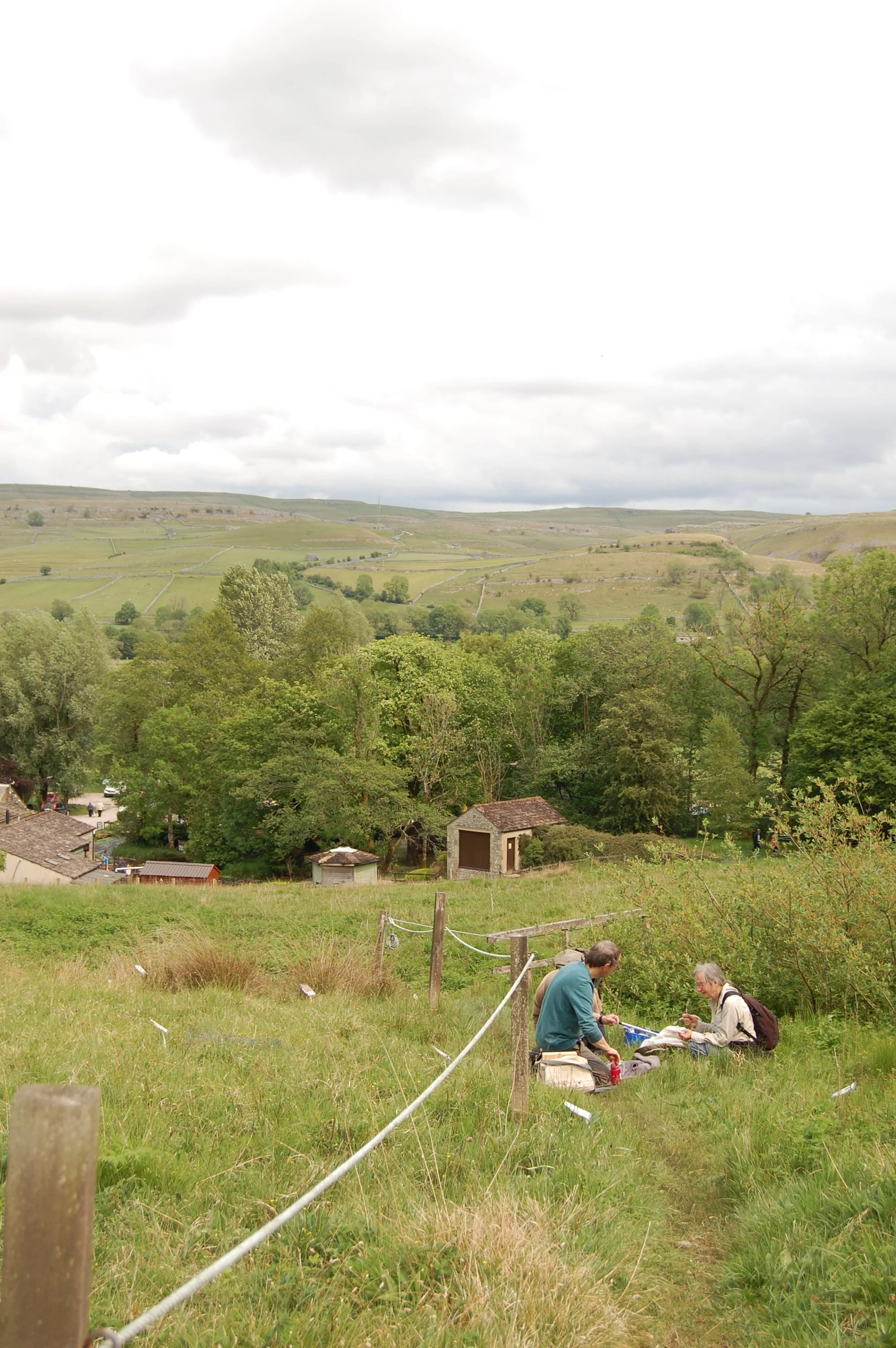#95 Lady's-slipper Orchid by Josie Monaghan
Meet one of NEYEDC’s Ecological Data Officers, Josie Monaghan!
Josie first worked with NEYEDC as a short-term contractor in spring 2023 before joining permanently as an Ecological Data Officer later that year. Her work has mainly focussed on the Ancient Woodland Inventory Update project and supporting the species strand of the Local Nature Recovery Strategies for both the North Yorkshire and York and Hull and East Yorkshire areas. Before joining NEYEDC, Josie undertook her PhD at the University of York studying the population genetics of red wood ants and any effects anthropogenic habitat change may have had on the health of their populations. This work involved visiting a wide variety of woodland sites across the UK and deepened her love of these beautiful and fascinating habitats – particularly ancient woodlands. A newbie to the botanical world, and fresh from working with species that themselves benefit from translocations, Josie found the amazing comeback story of her chosen species irresistible.
Josie’s chosen species is the native Lady’s-slipper orchid, Cypripedium calceolus, one of Britain’s rarest wildflowers whose recent conservation success made the national news.
Lady’s-slipper in bloom at Kilnsey Park, Ian Hughes
The Lady’s-slipper is native across temperate Europe and Asia and was once found across the limestone regions of Derbyshire, Lancashire, Cumbria, Durham and – of course – Yorkshire. This orchid is beautiful, known for its distinctive yellow or green slipper-like lip and twists of purplish brown petals. The characteristic shape is an adaptation that traps pollinating insects inside the flower so they must travel past the reproductive structures, picking up pollen containing pellets – known as pollinia – before escaping and (hopefully) transferring them to another flower.
Their striking beauty made the Lady’s-slipper beloved by Victorian wildflower enthusiasts, and the once widespread plant was pushed to the brink of extinction by a combination of over-collection and habitat loss.
The species was thought to be extinct by the early twentieth century before a single plant was discovered in the Yorkshire Dales in the 1930s. The location was kept secret and volunteers watched over the plant for decades, while work began to restore the orchid to further sites across its previous range.
The Cyprideum Committee was set up, comprising a variety of expert enthusiasts including the late Phyl Abbott – a powerhouse of Yorkshire botanical expertise and friend of NEYEDC – who helped select the reintroduction sites and, in partnership with landowners, helped the planting effort, including at Kilnsey Park (more on this site below) [1]. The Committee continues to work tirelessly and is currently led by Mags Cousins from Natural England.
A close-up of the beautiful Lady’s-slipper flower, Ian Hughes
Two years ago, the Yorkshire Wildlife Trust (YWT) and their partners Plantlife, Royal Botanic Gardens Kew, the BSBI and the National Trust obtained funding from Natural England’s Species Recovery Programme to grow the decades-long recovery effort. Last year, almost a century after the flower’s initial rediscovery, this hard work culminated in the first new Lady’s-slipper being found in the wild [2]. This new plant is the first to have germinated in the wild thanks to the reintroductions. Jono Leadley, managing the YWT project, described finding the plant as “a truly thrilling moment. To see a healthy population of lady’s-slipper orchids back in their native area that are now reproducing themselves gives us real hope for the future” [2].
Finding this plant, despite the challenges of reintroducing Lady’s-slipper [3], is a huge achievement and a testament to the dedication of those who have volunteered their time and expertise over the years.
Recording and monitoring: volunteers at Kilnsey Park
Recorders on the Flush at Kilnsey, on part of the footpath from which the orchid can be viewed.
Kilnsey Park is one of the reintroduction sites selected by the Cyprideum Committee where Lady’s-slipper is beginning to reestablish. Stella Hughes, a volunteer recorder at Kilnsey Park, spoke of her and her husband Ian’s work there over the last five years:
“Alongside the owner of the site, Jamie Roberts, our work begins at the beginning of May when we check the orchids are clear of vegetation and wire cages are placed over the top as a deterrent to wild animals. At this point there are normally a few orchid shoots poking through the earth and we know they have survived the winter. Each week we count the number of shoots and measure the height of the tallest plant in the group. As well as giving a small weed, we look for slug and snail damage and remove any of these from the cages. By the middle of May the plant has begun to flower, and we record the number of single and double blooms. By the second week in June the flowering period for the orchid is over.
“The data is then sent to the Committee and analysed with the data from other sites. It is hoped that we can learn what habitats and conditions are needed to encourage the come-back of this beautiful flower.
“2023 was a bumper year for Lady’s-slipper flowers at Kilnsey. I only have records for the past 5 years and would need another 5 years at least to see if there was a correlation between various factors such as weather conditions, or natural habitat growth to feel confident that these elements had a significant impact on the orchid flourishing. Each year we enjoy the excitement of watching the orchid and making a comparison with our previous records.
“Finding the ideal requirements for this endangered species to flourish again is what we are looking for and each year holds the same excitement as we wait for the magnificent blooms to put on their splendid show. At Kilnsey we are able to share this beautiful sight with members of the public as they walk along the guided footpath through the SSSI nature reserve. It is a very interesting, stimulating and satisfying volunteering task and I hope the data we provide will contribute to give answers in the future to this endangered species becoming commonplace in our northern countryside once again.”
You can see Lady’s-slipper in beautiful bloom between May and June at Kilnsey Park, near Grassington in the Yorkshire Dales.
Further information and acknowledgements
Josie would like to thank Stella Hughes for her contributions to the writing of this article, and Ian Hughes for the photograph of the Kilnsey Lady’s-slipper orchids.
More information on the work of the reintroduction project from the YWT here and Plantlife here, and on Kew’s genetic studies supporting the project here.
References
[1] Millard, A (2022) Phyllis Patricia Abbott (1936–2021). BSBI News 150: 78–80.
[2] Yorkshire Wildlife Trust (2025) Groundbreaking project successfully returns orchid on the brink of extinction to Yorkshire Available at: https://www.ywt.org.uk/news/groundbreaking-project-successfully-returns-orchid-brink-extinction-yorkshire (Accessed 10 September 2025)
[3] Trudgill, D (2025) Past lessons and future requirements of reintroduction programmes for Cypripedium calceolus (Lady's-slipper Orchid, Orchidaceae). British & Irish Botany 7 (2): 60-72




